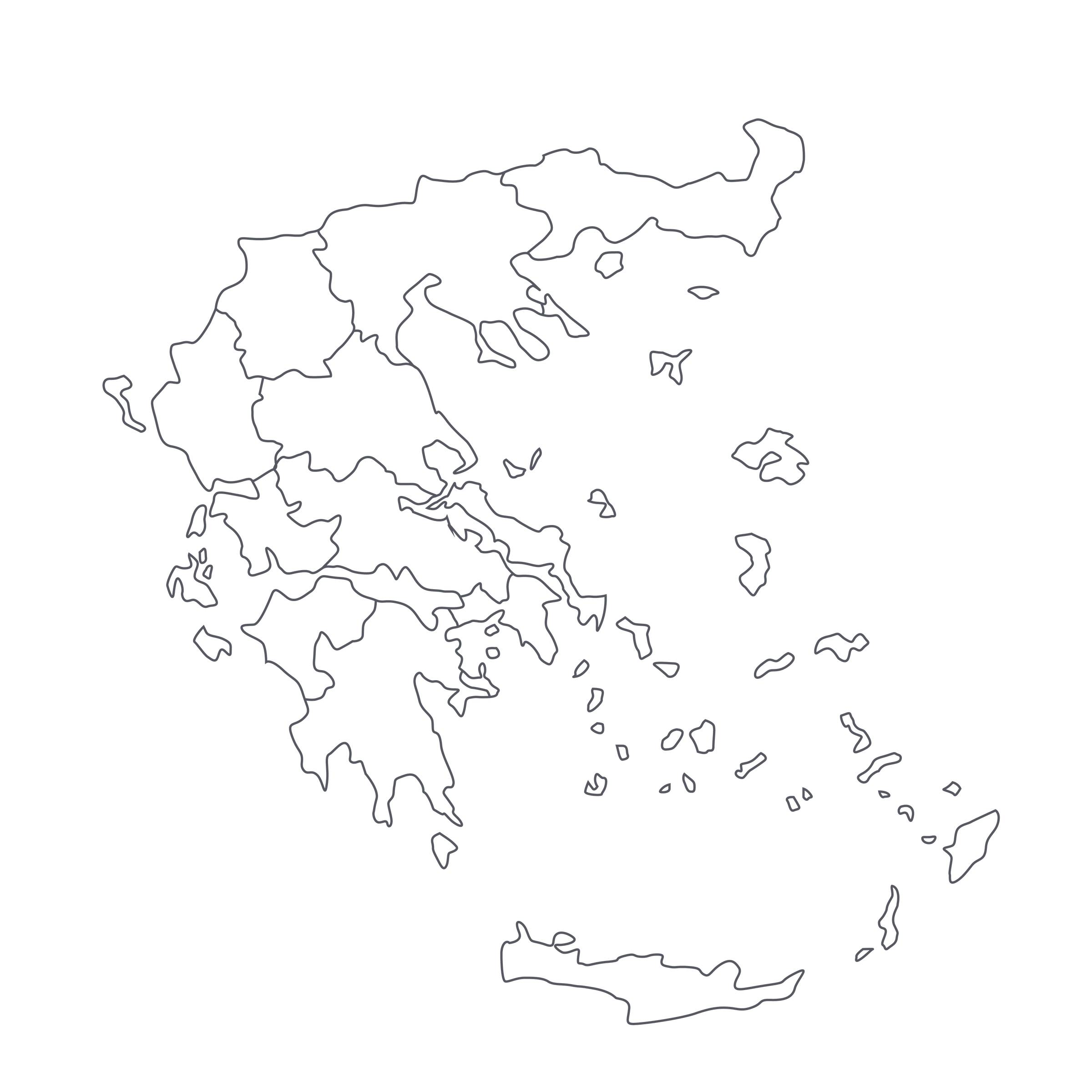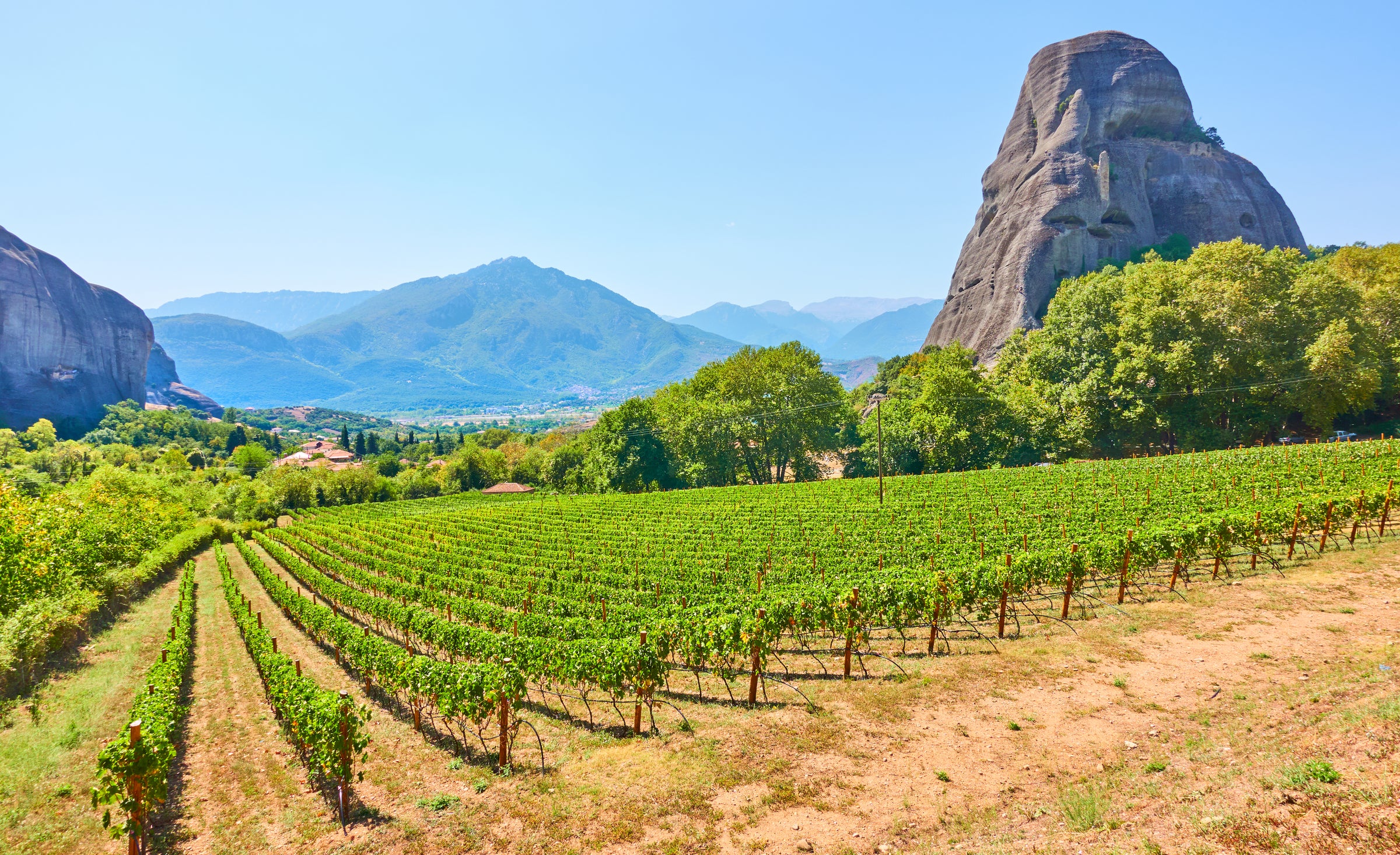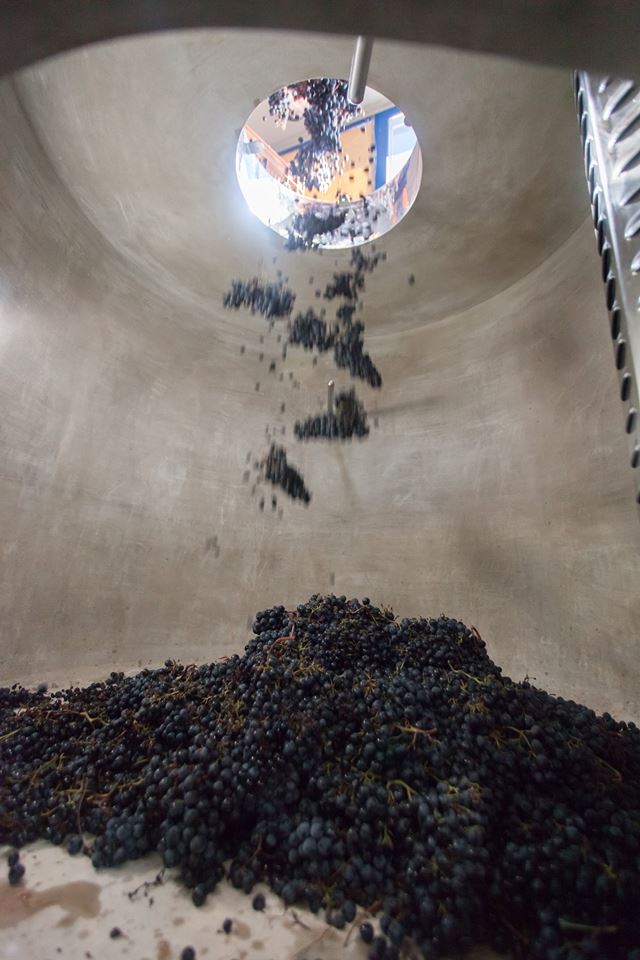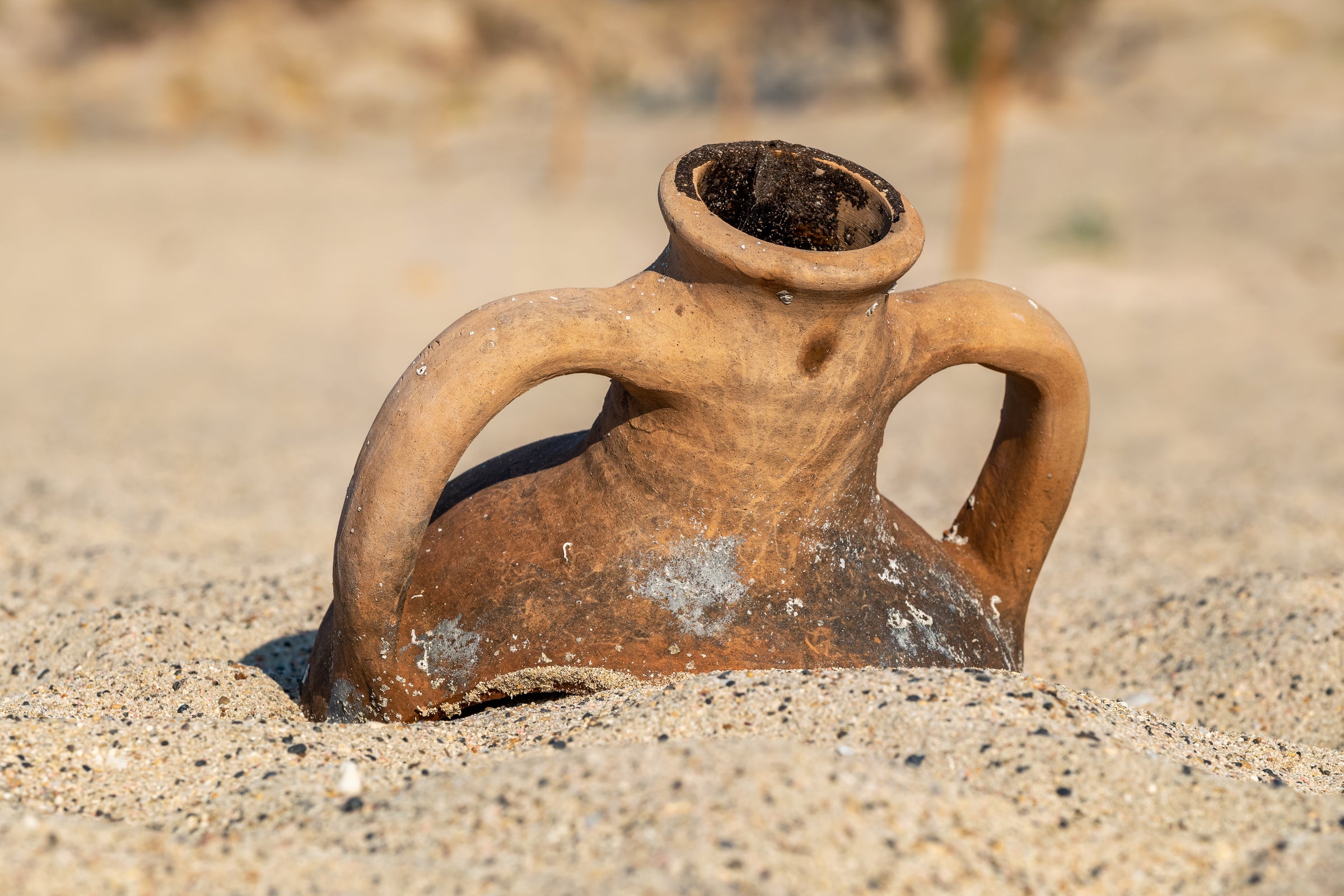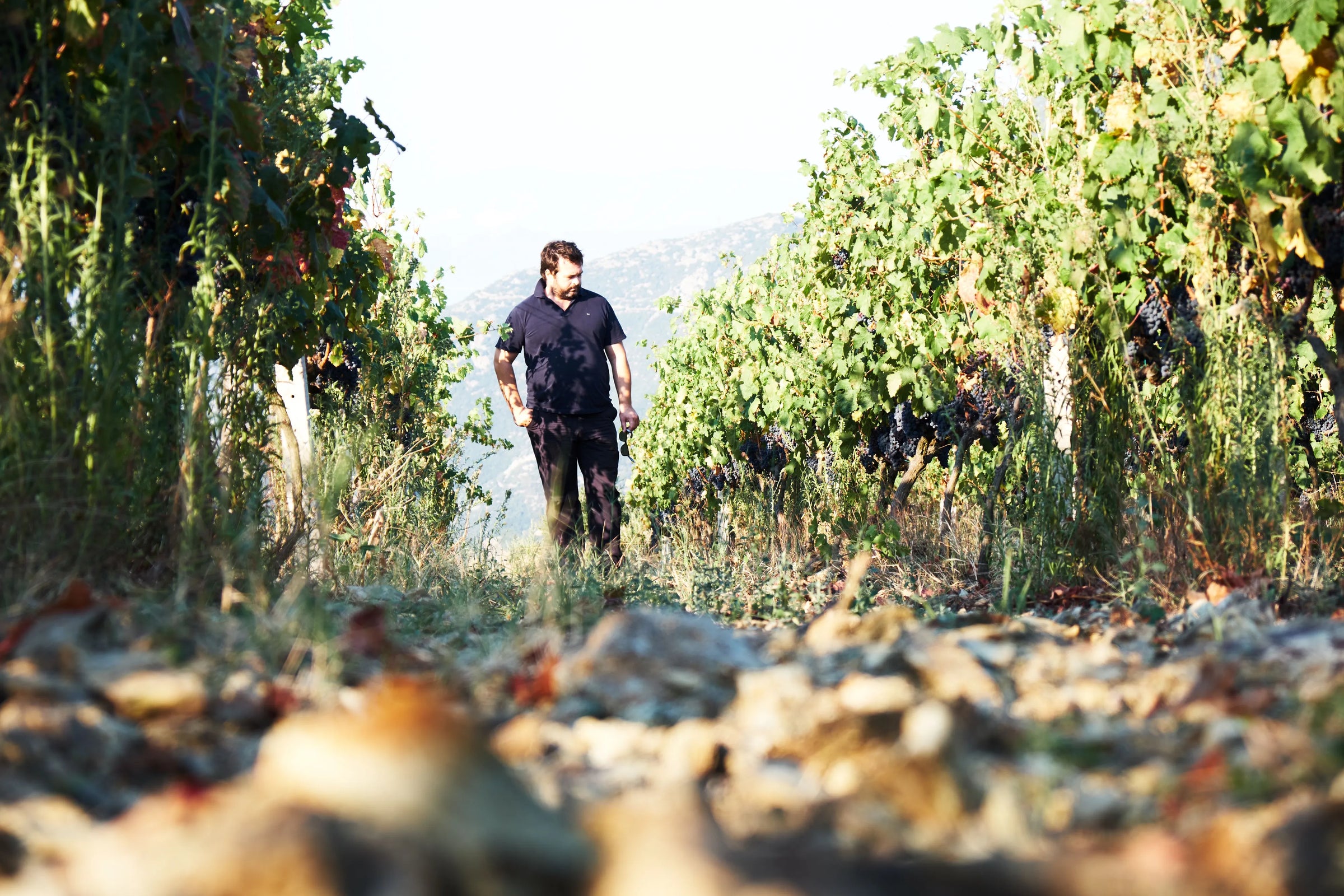This morning, the opening act. Now, the indomitable headliner. Will this 2004 “Antigone” single-handedly immortalize Domaine Economou? Yes. Will you ever see this wine again? All signs point to no. The small parcel that trickled into America was mostly rationed between key restaurant accounts, but even if you’re lucky enough to stumble upon an establishment with a bottle, it may not be advertised: I spoke to two wine directors in New York who will only be hand-selling it to customers who are well-versed in the wild world of Economou. Thankfully, you don’t have to plunge down that rabbit hole. Seeing as I was among the first in the US to order this wine (before it was released, well over a year ago), our few cases marks the largest nationwide allocation!
While Giannis Economou’s limited creations have earned a reputation of being mysterious and damn-near impossible to track down, I’m of the mindset that this is his greatest, rarest creation yet. Economou’s heirloom plots are filled with ungrafted Liatiko vines, an indigenous grape that can only be found in Crete. From them, he blends and bottles the most spectacular example in existence, but in 2004 he held back his favorite parcel to create today’s never-before-seen “Antigone” cuvée. The wine is spellbinding. Is it old Grand Cru Burgundy? Maybe Roagna Barbaresco? Or perhaps an exquisite Rioja? What is this wine?! It’s the inimitable magic of Economou’s mesmerizing crown jewel. Brace yourself, this is a rarity for the ages. No more than two bottles per person.
Nestled deep in the Mediterranean Sea, 200 miles north of Africa, Crete is the largest and most populous island of Greece. This self-sustaining land mass possesses a truly ancient winemaking history that reaches back to the highly advanced Minoans—currently the earliest recorded civilization in Europe. Clearly, vinous talent has deep roots here and today, one particular producer stands head and shoulders above the vast majority of his winemaking peers, anywhere.
Giannis Economou graduated with an enology degree from Alba before he went on to learn alongside some of Europe’s finest: From Château Margaux in Bordeaux to cellar work across Germany to Ceretto and Scavino in Piedmont, he refined his abilities under the best in the business. Although he had the entire fine-wine world at his fingertips, Giannis knew he could do something rare and pure on his home soil. So, he returned in 1994 and breathed new life into his family’s heirloom vineyards.
Today’s wine from the 2004 vintage was derived from ungrafted, organically farmed Liatiko vines with a splash of Mandilari, both of which are indigenous to the island. The pristine fruit fermented spontaneously and aged in a mixture of stainless steel, used French oak (perhaps even some red plastic jugs that line the outside of his winery), and bottle for nearly 18 years. Honestly, I cannot provide specific details beyond that because his vinous art isn’t documented. There are no tech sheets, no lab, no analyses; just him and his winemaking genius. You can learn a bit more from my experience there in our May newsletter.
Master of Wine Yiannis Karakasis also had the rare fortune of tasting Economou’s new releases, and the final one in the lineup was today’s stunning creation. Here’s what he had to say: “And then came Antigone. Smelling the wine transported me to Crete, sunsets, music, summertime, l’amour. If the nose of Sitia 2004 was a burst of aromas, the Antigone Liatiko is an orgy. (*****)” As for me, all I have to say is this wine is a hypnotic chameleon. It pours a hazy yet translucent pale ruby with a brick orange rim that would have experienced sommeliers immediately calling it decades-old Nebbiolo. The nose, however, pulls you in all sorts of directions: the sous bois and forest floor of 1980s Burgundy; the sweet-sour interplay of old Rioja, and the dried rose and berry profile of Barbaresco. And then the palate: Just under medium-plus-bodied and framed with ultra-soft tannins, it rolls out dried black cherry, prunes, licorice, damp leaves, currant liqueur, wild plums, cedar, mushroom, leather, and dried herbs. Serve this in Burgundy stems around 60 degrees, and decant at your own discretion. Enjoy slowly, over many hours.
